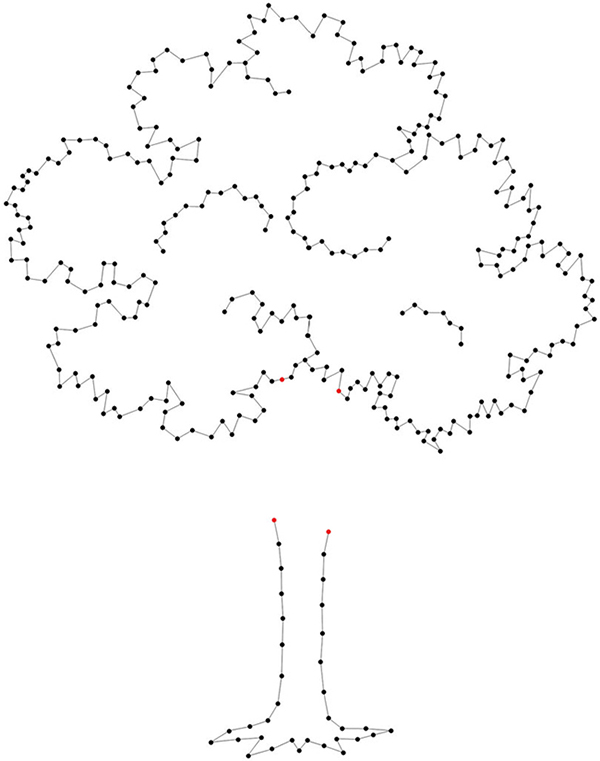


The maple tree is one of my favorites and is a symbol of balance and promise. When designing the pattern, I added light foliage detail in the middle to add dimension. It’s subtle but adds a nice touch. For this project, we’ll be combining the silhouette, pattern expansion, and double-wrap techniques.
Pine board: 1" × 12" (2.5cm × 30.5cm), cut to 14" (35.5cm) long and stained (Shown: Minwax Wood Finish in Red Chestnut)
5⁄8" (1.6cm) silver nails
Size 10 crochet thread in 1 color (Shown: White)
Embroidery floss in 1 color (Shown: DMC 3787/Dark Brown Gray)
Photocopy of patterns (page 124)
Picture-hanging hardware
2 felt furniture pads
Tools: Hammer, needle-nose pliers
Basic supplies: Thumbtacks, superglue, scissors, transparent tape
Preparing a board (page 8)
Applying a nail pattern (page 9)
Stringing basics (pages 10–11)
Double-wrap technique (page 13)
14" × 11.5" (35.5cm × 29cm)

MAPLE TREE SILHOUETTE PATTERNS
Enlarge at 200%.
